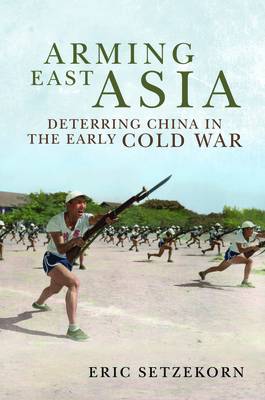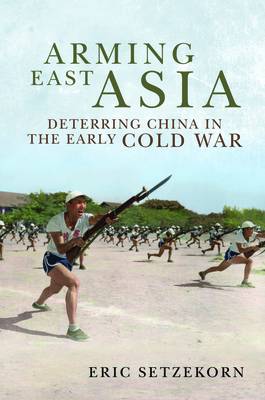
En raison d'une grêve chez bpost, votre commande pourrait être retardée. Vous avez besoin d’un livre rapidement ? Nos magasins vous accueillent à bras ouverts !
- Retrait gratuit dans votre magasin Club
- 7.000.000 titres dans notre catalogue
- Payer en toute sécurité
- Toujours un magasin près de chez vous
En raison de la grêve chez bpost, votre commande pourrait être retardée. Vous avez besoin d’un livre rapidement ? Nos magasins vous accueillent à bras ouverts !
- Retrait gratuit dans votre magasin Club
- 7.000.0000 titres dans notre catalogue
- Payer en toute sécurité
- Toujours un magasin près de chez vous
Description
Arming East Asia: Deterring China in the Early Cold War examines President Eisenhower's mutual security program in East Asia and explains how that administration worked to contain China. This historical chronicle offers insights and perspectives regarding how to address Sino-American tensions and maintain a free and open Asia-Pacific. Eric Setzekorn argues that President Eisenhower expanded and solidified the U.S. presence in East Asia through use of military aid and military advisory efforts in sharp contrast to the use of U.S. military forces by Presidents Truman, Kennedy and Johnson. In South Korea, Taiwan, Japan, and Southeast Asia (particularly in Thailand and South Vietnam), the United States spent billions of dollars and significant time developing local military forces. By the end of Eisenhower's two terms, a force of over 1.4 million Allied soldiers in East Asia had been trained, equipped, and often paid through American military assistance. Eisenhower's mutual security policies were vital in building local allies, and by the end of the 1950s, East Asia was beginning a long period of growth that would make it the economic heart of the world within fifty years. American policies that created close ties and involvement in the affairs of allied nations also constrained allies, such as Chiang Kai-shek in Taiwan, and Syngman Rhee in South Korea, who often sought to take direct action against the PRC. The heavy role of American military advisors and experts "on the ground" in East Asia also profoundly shaped the character of these nations, all of which were emerging from war, by putting massive resources into the government administration and military forces of newly formed states. With an assertive China using its growing political and military power throughout East Asia, contemporary U.S. security challenges are similar to the situation faced in that earlier contentious era. Eisenhower's policies from 1953 to 1961 clearly demonstrate an awareness of the possibilities for military, economic and political growth in East Asia, and the challenges of deterring Chinese (PRC) expansion during the early Cold War. The views expressed in this publication are those of the author and do not necessarily reflect the official policy or position of the Department of Defense or the U.S. government.
Spécifications
Parties prenantes
- Auteur(s) :
- Editeur:
Contenu
- Nombre de pages :
- 348
- Langue:
- Anglais
- Collection :
Caractéristiques
- EAN:
- 9781682478516
- Date de parution :
- 15-03-23
- Format:
- Livre relié
- Format numérique:
- Genaaid
- Dimensions :
- 154 mm x 230 mm
- Poids :
- 616 g

Les avis
Nous publions uniquement les avis qui respectent les conditions requises. Consultez nos conditions pour les avis.






